Gail Carson Levine is convinced she’s been touched by a fairy’s wand or has roamed accidentally into a fairy tale. After working as a mid-level bureaucrat in New York State government for twenty-seven years, Levine’s first children’s book, Ella Enchanted , won a Newbery honor in 1998 and became a major motion picture in 2004.
, won a Newbery honor in 1998 and became a major motion picture in 2004.
The magic continues. Levine now has eighteen books under her belt. They’ve been published globally and translated into thirty-five languages. She’s won reader choice awards - the most gratifying for a kids’ book writer because children do the choosing - in six states. Her novels have been named annual Best Books by School Library Journal, Publishers Weekly, Los Angeles Times, and the American Library Association. Levine’s historical novel, Dave at Night, was selected by the New York Public Library as among the Best Children’s Books of the 20th Century. Her “Snow White” fairy tale,

Gail Carson Levine has written 17 books for children. Her first book was "Ella Enchanted," which won a Newbery honor and was made into a movie. She blogs about writing here and wrote the nonfiction book, "Writing Magic" - with dozens of writing exercises for kids and the rest of us. She has a picture book and a mystery coming out, and she's sharing with us responses to questions she's had from writers and others...
WRITING FROM A MALE POV (If You're a Woman)
Try thinking of somebody in particular.
When she wrote a character who was trying to keep it's gender a secret, she had the character bow to a Count and then curtsy.
A bow and curtsy are shortcuts, and we need shortcuts because we don't have an eternity to establish a character - but shortcuts can tend towards stereotypes, so use them with care.
Establish your character's gender early - because it's jolting to be reading it wrong.
And she advises to get a guy to read it to make sure the character didn't act in a way that isn't credible.
NAMING CHARACTERS
Find a name that fits but isn't too obvious.
Think of what your character is like, and go to the thesaurus - look at the synonyms. If your character is Moody - Melancholy. Melody? Petulant. Petchula? What about nicknames? The name could be Michael, but his friends could call him "Mope." (He might not like that, and it would just make him mopier!)
SETTING
Be aware of the dangers of information dumps in the first chapter. (Though it worked in "Tuck Everlasting," she says in general to avoid it.)
Setting can be a tool for character development.
In an action scene, you don't necessarily want to stop to describe what the character is wearing. But if you drop in early that the hero dresses in his usual baggy pants, and then wham! It's a problem when he's riding his bike in that chase scene.
And for what happens:
If a fishtank is going to explode and you need to set up it's there first for the reader when the character enters the living room, think about the character NOT saying "Julia, I see your Dad still has his fishtank."
Consider the character saying "I always think those fish are staring at me."
Or the character thinking, "The room always felt heavy to him, two sofas, fish tank, leaden curtains..." - You drop it in there and when the fish tank explodes, the reader will be surprised but will also accept it.
CHARACTER/PHYSICAL DESCRIPTION
She looks at pictures and art as inspiration for the details she uses for her characters.
She's also sharing writing prompts throughout this session. Like the idea of taking one of your characters with you when you go somewhere - what does your character notice? miss? react to emotionally? Write it down when you get back.
Lots of great advice!
Although the title of Gail Carson Levine's talk is called Sweat and Magic, she will mostly be talking about sweat.
Gail has been writing her blog on writing for over a year. Her most frequent note about writing is, "I don't know what I'm doing."
"I get very stupid when I write."
"There is so much that is possible." If you're writing story that doesn't follow a traditional story arch, Gail believes you can make it work.
She likes to make lists, and suggests you might try to. "When you make a list, no idea is stupid."
Usually plot arises out of situation. Watch people and see this in action. "We all create plot as we all create our lives. So it's worth observing ourselves and the people we know."
Suspense Builders:
-Time "When you have time pressure in a book it's wonderful."
-Distance, Distance can operate a lot like time.
-Thoughts, "If you character is worried, your reader will be worried."
-Action
-Separation, from the problem
-Main character flaw
-Secondary character flaw
-Expectation, could be good or bad
-A test or a trial
-Disaster
-Something lost
Prompt: As you go through the rest of the day, think of ways, wherever you are, that something tense could happen. Write about it.
"When we reread a book, it's totally predictable, but we love it anyway."
How to surprise:
-confound expectation
-surprise yourself
-ask your characters
-make a list!
-avoid easy morals
-review
-workshop it
Prompt: Create a distaster by having one character ask another about his thoughts at that moment.
Character Development
Gail's characters don't arrive whole and fully formed. She must be with them for a while before they are fully developed. She discovers it through dialogue and action as she wings it. "It’s kind of existential. We become ourselves through our acts and so do our characters."
Gail recommends the book WHAT IF: by Anne Bernays and Pamela Painters which has a character questionnaire she uses throughout the writing process.
It's wonderful to listen for speech mannerisms.

Prompt: Three characters getting ready for school. How does each one prepare? Reveal the thoughts and feelings of each, and each should be different.
0 Comments on Gail Carson Levine: Sweat and Magic as of 1/1/1900
Our series of TEAM BLOG interviews with
Annual Summer Conference faculty continues as Martha Brockenbrough
features award-winning author Gail Carson Levine on her WWA SCBWI blog.
Gail will be offering a conference keynote address, SWEAT AND MAGIC, and will give a workshop on INFREQUENTLY ASKED QUESTIONS ABOUT FICTION WRITING.
Here is a bit from Martha's interview with Gail:
"There's something so magical about Gail Carson Levine's stories. Her first, Ella Enchanted, reimagined Cinderella; in it, Ella is cursed to be obedient--an absolutely genius touch. That book won a Newbery Honor Book in 1998, and eventually became a movie starring Anne Hathaway.
You could call Gail Carson Levine the queen of fairy and princess stories. Later works include Fairest, a beautiful twist on Snow White, as well as several works in the Disney Fairies series...:"
Click here to register for the Annual Summer Conference.
In a recent post, Gail Carson Levine discusses how to get background material into a story without the use of a flashback scene,
along with tips for when you do use a flashback.
Weaving in Backstory
Poem. She points out that in her story, The Two Princesses of Bamarre, she uses an epic poem: everyone knows the poem, quotes from it at times, or even perform parts of it.
Newspaper clippings. Levine also points to The Blind Assassin by Margaret Atwood, which uses newspaper clippings to introduce backstory.
Dialogue in a counseling session. Of course, a character could spill the beans during a session with a counselor.
 Sometimes, I’ve heard the opinion, though, that these “techniques” are cheats of sorts, ways to work in material that doesn’t really belong. A story should start in one place and pretty much progress linearly. Using backstory is like this picture of tattoos on a woman’s back: for her, there’s no easy way to SEE these tattoos (mirrors, photo, description), it’s unnatural for her to visualize them.
Sometimes, I’ve heard the opinion, though, that these “techniques” are cheats of sorts, ways to work in material that doesn’t really belong. A story should start in one place and pretty much progress linearly. Using backstory is like this picture of tattoos on a woman’s back: for her, there’s no easy way to SEE these tattoos (mirrors, photo, description), it’s unnatural for her to visualize them.
A bold opinion, that backstory is a cheat — there are certainly shades of this.
Do you think backstory techniques like this are effective, or do they feel like cheats? When are they effective? Do you like prologues as a way to introduce backstory? What’s your favorite way to deal with backstory?

I was able to get a lot of "audio" reading done this month, finishing three, and really loving two of those three. Head on over to and link your audiobook reviews at Audiosynced, this month at Abby (the) Librarian.
Frindle by Andrew Clements

I know, I know, I'm a librarian and I have yet to make my way through Andrew Clements' books. Each one that I've actually read, I've loved, and this one was probably my favorite. The reader, John Fleming, did a great job and kept me completely engaged from start to finish.
This is a quick read and a great choice for a family road trip. You could make it through a couple of books this length in a few hours.
Audiobook borrowed from my local library
The Forest of Hands and Teeth by Carrie Ryan
 I'm going to really push this one on you! I've read the book and was just using the audio version as a refresher in anticipation of The Dead Tossed Waves. I didn't count on being completely taken in by the reader, Vane Millon, and feeling as if I was really experiencing the story for the first time. This reader is the BEST reader I have ever come across and I'm going to be frantically searching for more titles she's read.
I'm going to really push this one on you! I've read the book and was just using the audio version as a refresher in anticipation of The Dead Tossed Waves. I didn't count on being completely taken in by the reader, Vane Millon, and feeling as if I was really experiencing the story for the first time. This reader is the BEST reader I have ever come across and I'm going to be frantically searching for more titles she's read.
One of the few times I'll actually say that the audio version was better than the actual book. Loved it!
Audiobook borrowed from my local library
Ella Enchanted by Gail Carson Levine
 Unfortunately, this is the one that I didn't enjoy quite as much as the others. I know that so many of you just love this book and it may be because I listened to the audio rather than reading, but I really felt the entire story was just ok. Almost cheesy at points. And the reader, Eden Reigel, sounded about 9 years old through the whole book, even when Ella was almost out of her teens.
Unfortunately, this is the one that I didn't enjoy quite as much as the others. I know that so many of you just love this book and it may be because I listened to the audio rather than reading, but I really felt the entire story was just ok. Almost cheesy at points. And the reader, Eden Reigel, sounded about 9 years old through the whole book, even when Ella was almost out of her teens.
Just not great for me. But I know that there are lots of Ella fans out there, so go check it out for yourself!
Audiobook borrowed from my local library
Questions for Teens
As you may know, our teen panel starts in Feb. They will be talking abut books, what they like, what attracks them to covers, how they hear about books, etc.
If you have any questions for our teen panel on marketing, please leave them in the comments or email me by the end of the week.
This is your chance to get in the minds of teens and find out how to target them directly.
Marvelous Marketer: Gail Carson Levine (Bestselling author, Ella Enchanted)
Hi Gail. Thank you so much for joining us. Can you share a little with us on your latest project, how you got started, and your journey to publication?
Hi Shelli. Thanks for having me today.

My latest book is Ever, a young-adult fantasy set in ancient Mesopotamia, which got its start after I read the bible for the first time and became interested in the troubling story of Jeptha and his daughter. My story spun off the biblical one. It doesn’t have its own website. My general website, which is maintained by HarperCollins and I also have a blog.
You are a blogger, did that have anything to do with your success? Or how do you utilize your blog in a marketing way?
I recently started blogging in May, ’09, and I was originally published in 1997. However, I started the blog with the hopes of bringing more people to my books, which are listed on the site. I also use the blog for event announcements.
In your opinion , what are the top 3 things every author should and must do to promote their book?
- Write the best book you can. Then revise it. Then take your editor’s suggestions VERY seriously. Never disregard an edit unless you have a really good reason.
- If you’re comfortable with public speaking, let your publicist know, and say that you’d like any opportunities that come along to speak at conferences about your books. But do NOT bug your publicist or expect a lot of support for a first book.
What creative things have you done to promote a book?I always send postcards out especially to family and friends by snail mail when I have a new book coming out. Ask your editor if the house would be willin
It's June! Glorious, busy June!
I am back from Iowa--it was beautiful and sunny and I ran into Kelly at the coffee shop and am happy, sleepy, and sunburned. It's fun to see that the people I went to college with are fundamentally the same. We're happier and better dressed, and can now afford MUCH better beer, but fundamentally we're the same. And it's awesome.
We have some fun events coming up here in blog-land. Events YOU can all play along with at home.
First off, Weekly Geeks has declared this week's geekery to be "catch up on reviews week" which I think is something we all need to do, right? So this week (until Friday) I'm aiming for 5 reviews a day. (Even though I am way more than 25 books behind-- I currently have 39 unblogged books, but given I have issues blogging 5 books a week, I'll aim for 5 a day. It's like vegetables. 5 a day!).
This weekend is MotherReader's 48 Hour Book Challenge. Go sign up for your chance to turn X-treme Reading into an X-treme sport. Also, take a vote in my sidebar for which books you'd like me to read!
AND! At the end of the month (June 28-29) is the 24 Hour Read-a-thon to benefit Reading is Fundamental. More information on the event and to sign up is here. And information on how to sponsor my reading extravaganza is here.
Anyway, let's get started on that 5-a-day business, ok?

Ever Gail Carson Levine
As far as I'm aware, this is an original tale. Olus is the Akkan God of the winds (part of a pantheon that reminds one of Greek or Roman mythology. At 17, he's the youngest of the Gods by a few hundred years and is lonely. He longs for a mortal friend, but fails in his attempts to make friends.
Kezi lives in the land of the Admat, and omnipotent, invisible God more similar to the religions of Abraham...
In his longing for friends, Olus has become a shepard and rents land from Kezi's father and falls hopelessly in love. However, Kezi is doomed to die. Not in the way that all mortals will die eventually, but she has been promised as a sacrifice to Admat and will die in 30 days.
Olus knows of ways one can become immortal, but Kezi would have to realize that there are other Gods than Admat, and she must become a herione and Olus must become her champion. Only then can they possibly save Kezi's life.
Told in short chapters of alternating viewpoints, this is a bit of a departure from such Levine classics as
Ella Enchanted and
Fairest but Levine knows how to tell a story. The language is more sparse than I'm used to and it lacks her usual humor, but Levine can paint a scene with a minimum number of words . I liked the illustrations used above the chapter numbers-- the numbering system looks like an ancient form of writing and it was fun to realize what was going on there. I think Levine fans will still love this. I also think it will really appeal to fans of Julius Lester's
Cupid: A Tale of Love and Desire.
Book of a Thousand Days Shannon Hale
Once again Hale turns to the Brothers Grimm for inspiration, this time, not Rapunzel as the tower suggests, but
Maid Maleen.
Set in a land inspired by Ancient Mongolia, Dashti is mucker, a nomad, looked down on by the city dwellers. But she is also an orphan and must find work to survive and becomes the maid to Lady Saren, only to find that Saren is about to be locked up in a tower for seven years after refusing the match her father has made.
Dashti goes to the tower where it is dark and foreboding. Although they have been left enough food to last seven years, that's only if they can keep it from the rats. Lady Saren is spoiled and given to tantrums. She is also completely helpless. Lord Kasar, the dreaded fiance appears frequently to taunt the captives. But Khan Tegus, Lady Saren's true love also visits and brings small comforts in the form of a branch that smells of the outdoors and a cat to help with the rats.
Shannon Hale is still on the top of her game. She can paint a culture and a people with just a few sentences. This book is also illustrated, which is nice. I'm reading it in ARC form, so I think some illustrations are missing but the ones that are included are nice. Most are made to look like the illustrations Dashti herself has drawn in her diary, but there is high artistic quality.
There is much to the book besides the days in the tower, although there isn't much to the Grimm tale, and that's where Hale's magic lies-- when she takes the tale way beyond its original borders, while still staying true to the source material.
full disclosure: I got the ARC from the publisher last summer at ALA, but I would have read it anyway, I mean, it's SHANNON HALE!
The Swan Maiden Heather Tomlinson
Doucette has always been jealous of her older sisters. Beautiful and haughty, they're able to work magic, while she is plain and stuck at home learning how to be a chastelaine. Embroidery and running a household is nothing on her sisters who can fly.
But then she finds the swan skin her mother has hidden from her, the swan skin her mother would give Doucette's future husband in order to keep her from running.
But, the true story comes when Doucette falls in love with a shepherd boy. In order to gain the right to marry her, he must perform 3 impossible tasks. But that might not be enough to keep them together...
Doucette is a character that's easy to identify with, but more so. Not only are her sisters perfect and beautiful, which is bad enough, but dude! They can fly! And Doucette is always falling down and tearing her clothing and always left behind.
And then when she gets what she thinks she wants, it doesn't necessarily help.
A wonderful addition to the genre that should be read by everyone who likes Shannon Hale or Juliet Marillier, but will also appeal to those who aren't already converts to the new breed to fairy tale retellings or original tales that maintain that old timeless quality.

Review by Emily, head mama of DCR and ...
whimsy...
Ever is a brand new fairy tale brought to you by the author of Ella Enchanted, Fairest, and many other great stories.
Ever is told from both the perspective of Olus, god of winds, and the mortal girl he falls in love with, Kezi.
Olus lives a lonely life. None of the other gods are even close to his age. When he turns 17, he leaves the Akkan gods and seeks a life with the mortals. He becomes a goatherd for Kezi’s father. He watches Kezi and grows to care for her. The other gods tell Olus that it is a waste to care about mortals because they are soap bubbles. They are here one moment and die the next. But when Kezi’s life nears its end, Olus can’t stand the thought of it. He and Kezi embark on a hero’s journey to save her.
As I mentioned, Ever is an original fairy tale. The characters are fun and interesting, but I’m not sure they are as fleshed out as I would have liked. The plot is fresh. Seeing from each character’s point of view is intriguing, although occasionally confusing.
I definitely recommend
Ever to teens and preteens who enjoy fairy tales. I didn't love it as much as
Fairest and
Ella Enchanted, but it is still worth reading.
The meeting began with three members who attended Rabbit Hill Festival of Literature sharing their experience. Rick Riordan, author of Lightning Thief, suggested checking out a program called Inspiration to map out plot development. His website is also full of resources for writers and is worth looking at. Gail Carson Levine, author of Ella Enchanted, shared that the hardest part about writing for her is accepting her own work. A good lesson for some of our members to take with them. Next, the group critiqued the submitted chapters. At the end of the meeting the group decided to accept more members and to try to meet every two weeks.
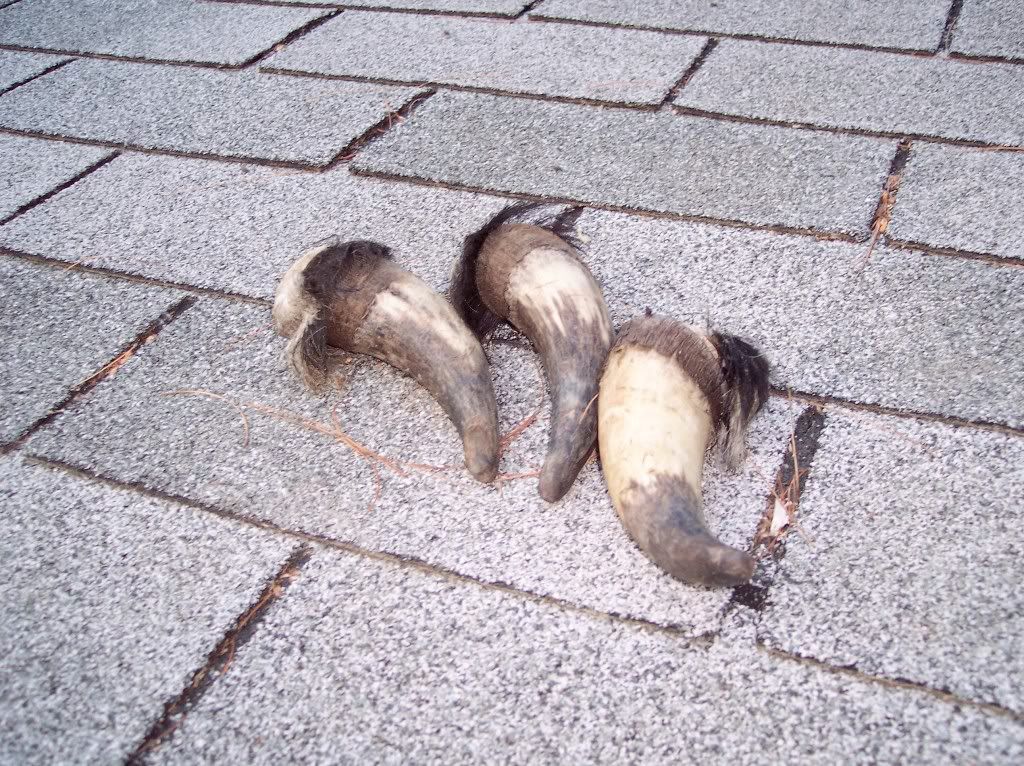 It's been a while, so I thought I'd post an update on the cow horns that are on my roof. If you're a new LJ friend and don't understand why someone would do this, you can read all about it in my earlier post. (Then you can quietly un-friend me if you decide I'm just too strange to hang out with, after all.)
It's been a while, so I thought I'd post an update on the cow horns that are on my roof. If you're a new LJ friend and don't understand why someone would do this, you can read all about it in my earlier post. (Then you can quietly un-friend me if you decide I'm just too strange to hang out with, after all.)
I checked on the horns tonight, and the small critters eating away the gunky stuff between the horn and the bone in the middle of it have made some progress. Not much, but a little. In one horn, you can now see a tiny gap between horn and bone, where the fleshy stuff is gone. At this rate, however, SPITFIRE will be published, read, and out of print before these things are ready to show anyone at a presentation. They also smell bad.
What I really need, I've decided, is something that works more quickly. Blog karma brought me the answer when I checked out Unabridged -- the Charlesbridge blog and heard about what some of their editors saw on a tour of the American Museum of Natural History during a break from BEA.
Check out these guys...
Turns out you can order them online, too, but they're expensive (and kind of scary, frankly). Let's hope the critters on my roof get to work soon.




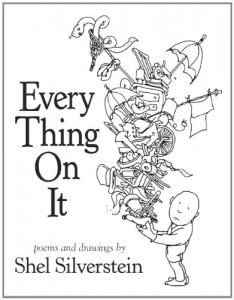
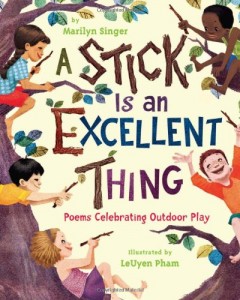


 Gail Carson Levine author of Ella Enchanted, which was a Newbery Honor Book in 1998 wrote an interesting article on her blog about accepting criticism. Here is an excerpt of wrote she wrote:
Gail Carson Levine author of Ella Enchanted, which was a Newbery Honor Book in 1998 wrote an interesting article on her blog about accepting criticism. Here is an excerpt of wrote she wrote: 

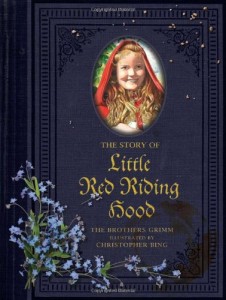
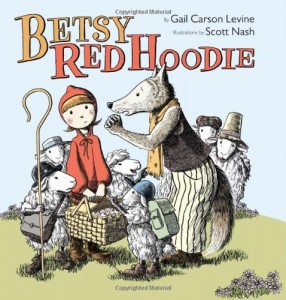
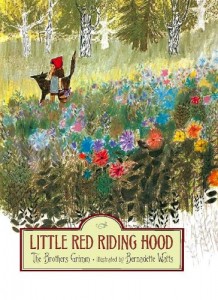
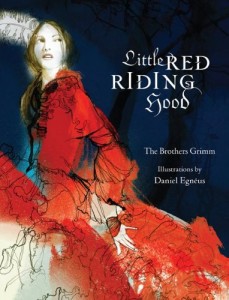









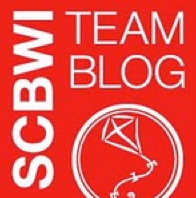

 Sometimes, I’ve heard the opinion, though, that these “techniques” are cheats of sorts, ways to work in material that doesn’t really belong. A story should start in one place and pretty much progress linearly. Using backstory is like this picture of tattoos on a woman’s back: for her, there’s no easy way to SEE these tattoos (mirrors, photo, description), it’s unnatural for her to visualize them.
Sometimes, I’ve heard the opinion, though, that these “techniques” are cheats of sorts, ways to work in material that doesn’t really belong. A story should start in one place and pretty much progress linearly. Using backstory is like this picture of tattoos on a woman’s back: for her, there’s no easy way to SEE these tattoos (mirrors, photo, description), it’s unnatural for her to visualize them. 
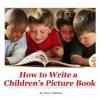 How to Write a Picture Book
How to Write a Picture Book





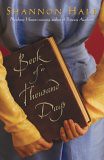
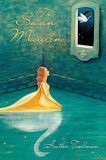

 It's been a while, so I thought I'd post an update on the cow horns that are on my roof. If you're a new LJ friend and don't understand why someone would do this, you can
It's been a while, so I thought I'd post an update on the cow horns that are on my roof. If you're a new LJ friend and don't understand why someone would do this, you can
‘I’m still not entirely certain I understand why he’s in the Dwarf Witness Protection Program at the end’ is enough to get me to buy this book. Who cares if it all makes perfect sense? It sounds hilarious!
YAY! So glad you liked this one as much as I do.
As much as I’m dying to share it with my students (and I go back to school today double yay!), I wanted to wait for the actual book just because of the art and quirky design. As you know I too am curious about how much context they will need to get some of the poems, but I have a feeling it isn’t going to matter. Once they get the idea of it they are going to plow through them and if they get some better than others, so be it.
Boy, I’d thought to hold off blogging about it till closer to the pub date, but this comment is getting long and I may not be able to wait!
I have heard NOTHING that makes me want this book any less. Not the odd inexplicable poem, not the odd strange illustration. I love the website collecting passive aggressive notes, and to start the children off with this young — *sob* — just brings a tear, that does.
Seriously – didn’t know Gail Carson Levine had it in her, and I’m glad she includes the original. Were I still teaching, this and the Sidman book together would definitely be perfect springboard for weeks worth of poetry and projects and letter writing.
This sounds fabulous! Can’t wait to read it!
I’ve had the privilege of hanging out with Gail at at Writer’s Conference, and I COMPLETELY believe she has this in her. And I mean that in the nicest possible way. I’m off to place my order….
Always loved Gail Carson Levine. Check out her moving story “Dave at Night” for a great read. Looking forward to March 13th……………
This Is Just To Say is my #1 favorite children’s poetry book EVER, so this — with an unnervingly similar conceit — has a lot to live up to. I’m excited to see it.
Looking forward to this one. As I was reading your review, I thought that this could inspire a good poetry writing lesson. Love that Levine has a blueprint for teachers.
Thanks for this excellent and thorough review, Betsy! I hope this is not terribly obnoxious to point out, but if you’re so inclined, do visit 7 Impossible Things Before Breakfast–yesterday’s post features several final spreads and illustrations from FORGIVE ME. Here:
http://blaine.org/sevenimpossiblethings/?p=2282
Oh shoot! Can’t believe I missed that post on 7-Imp. Usually I’m good at catching that kind of thing. Thanks for the heads up, Matthew!